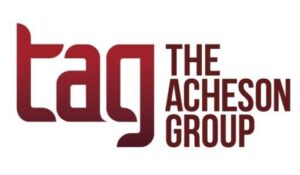While much of the focus on imports to China is currently on the tariffs, it is important that food exporters in the U.S., Canada, and elsewhere stay up to date on the country’s required food safety and nutrition standards, which apply to imported as well as domestic foods.
In late March, China’s National Health Commission (NHC) and State Administration for Market Regulation (SAMR) released a number of revised food safety and nutrition standards to which those exporting certain foods to China are subject. To assist US producers, the USDA’s Foreign Agricultural Service staff for China provided unofficial translations of the final standards, including summaries and major changes for each.
The updated standards, as detailed below, relate to nutritional labeling for prepackaged foods, food edible starch, and canned and cereal-based foods for infants and young children.
Nutritional Labeling Standards for Prepackaged Food (CH2025-0074)
Compliance date: March 16, 2027
Replaces GB28050-2011 (January 2013)
Applies to nutrition information and claim labeling for all prepackaged foods directly offered to consumers, excluding foods for special dietary uses.
Major changes from the current version include:
- The expansion of the mandatory nutrients content labeling to include energy, protein, fat, saturated fat (acid), carbohydrate, sugar, and sodium, to guide consumers for healthier foods
- Requirements for adding the caution/warning message: “children and adolescents should avoid excessive intake of salt, oil, and sugar,” to control overweight and obesity rates at younger ages
- Modification on categories of prepackaged foods that are exempted from mandatory nutrition labels
- Revision of nutrient reference values (NRVs) for nutrients such as biotin, vitamin d, zinc, iodine, selenium, and copper
- New standard language to be used for claims for certain nutrients
National Food Safety Standard Edible Starch (CH2025-0082)
Compliance date: March 16, 2026
Replaces GB 31637-2016 (June 2017)
Applies to all edible starch products produced and sold in China.
Major changes from the current version include:
- Revised definitions and specified categories for edible starch
- Included specific physical and chemical indicators of water content for categories of starch products and added new indicator for hydrocyanic acid
- Removed microbial requirements for total bacterial count and coliform groups for finished products.
Compliance date: March 16, 2026
Replaces GB 10770-2010 (April 2011)
Applies to technical requirements for canned complementary foods for infants and young children aged 6- to 36-months old.
Major changes from the current version include:
- Revised category definitions
- New requirements that honey should not be used in the products
- New chemical indicators for histamine in products containing fish
- Updated references for contaminants and mycotoxins limits
- New warning message: “This product contains granules and flakes (cubes), so please pay attention to swallowing safety when consuming” required for products in forms of granules, flakes, or cubes
Compliance date: March 16, 2026
Replaces GB10769-2010 (April 2011)
Applies to ingredients, nutritional components, microbial and contaminants limits, labeling and packaging of cereal-based complementary foods for infants and young children, including ready-to-eat and raw products.
Major changes from the current version include:
- Scope, terminology, definition, and description of product classifications revised
- Maximum values of some nutrients added
- Vitamin C changed from optional to basic nutritional ingredients, magnesium added as optional nutritional ingredient, and iodine deleted as optional nutritional ingredient
- New requirements that honey should not be used in the products and revised sugar allowances
- Maximum limits added for contaminants, mycotoxins, and pathogenic bacteria
- Standard number of testing methods updated
- Packaging media description added
Whether exporting to or importing from China or other countries, there are very specific regulations that vary by country and product. TAG has the hands-on experience and expertise to assist you in your global interactions. Give us a call to help!
All written content in TAG articles, newsletters, and webpages is developed and written by TAG experts, not AI. We focus on the realities and the science to bring you the most current, exacting information possible.





